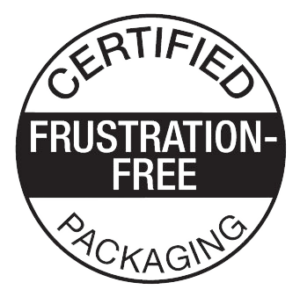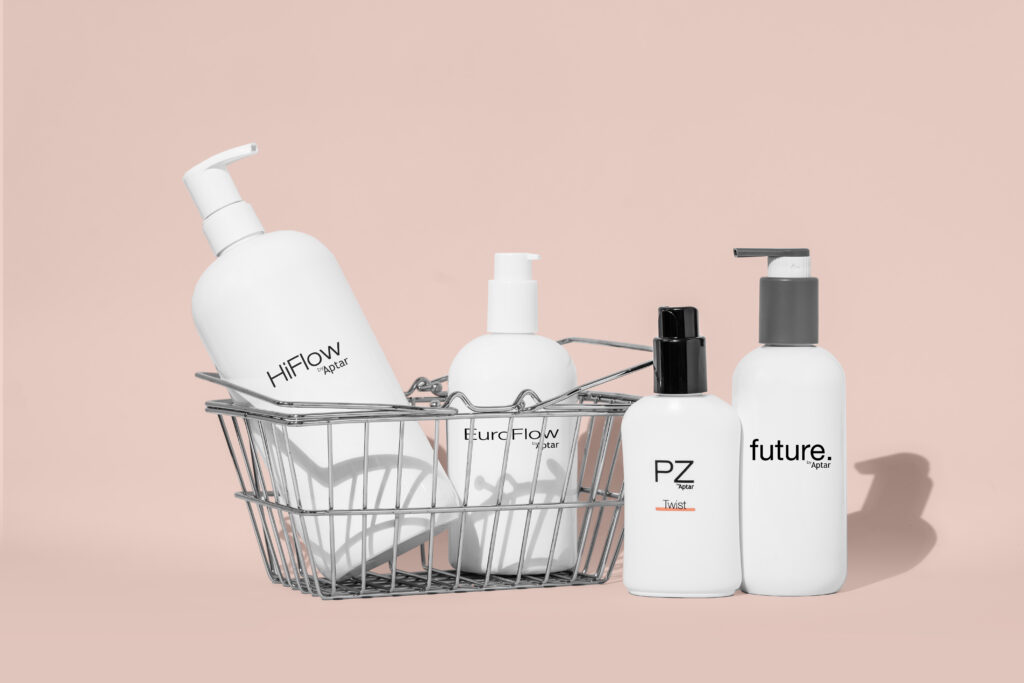Consumers and Packaging: A Reality Check
One important factor to emphasize when considering an omnichannel packaging approach is the desire for brands to have a consistent consumer experience and brand image, regardless of where the product appears – on the customer’s doorstep or in the brick-and-mortar retail location.
According to Nielsen, shopping has accelerated both online and offline as consumers are shopping both channels in the beauty category. Growth is especially robust in the online channel. In fact, Shopify reports that in 2022, U.S. cosmetics and beauty retail e-commerce sales were more than double those of 2019 ($18.6 billion versus $9.21 billion). By 2026, those ecommerce sales will account for nearly a third of the category’s total retail sales. The report also notes that Amazon health, personal care, and beauty ecommerce sales will grow by 24.4%––the fastest-growing category for the company.
Whether products are shipped to a store or direct to a consumer, e-commerce capable packaging is a must – for packaging companies, brands, retailers, e-commerce companies and, of course, consumers.
In a recent customer survey managed by Aptar of nine top global and nine top region accounts:
 of respondents reported that leakage of products during the e-commerce transport process was their biggest pain point.
of respondents reported that leakage of products during the e-commerce transport process was their biggest pain point.
 of respondents reported damaged product packaging and broken components.
of respondents reported damaged product packaging and broken components.
of respondents identified lotion pumps as the product technology with the biggest need for an e-commerce capable packaging solution, followed by dispensing closures.
Aptar’s continued efforts in adapting, integrating, and rethinking its approach to dispensing and spray pumps, aerosols, and on-the-go/mini packaging helps our customers differentiate their product packaging while optimizing the customer experience. This also helps minimize the environmental impact of packaging by eliminating the need for excess overwrapping and return of damaged products. Our intent is to be a disruptor by delivering innovative, e-commerce capable and sustainable solutions that are clean and safe with an attractive design, while at the same time optimizing cost, sustainability and the consumer experience. This includes a frustration-free unboxing experience for the consumer while reducing the use of protective carton and paper packaging.
What is ISTA-6 and Why Is It Important?
A key to success with this omnichannel approach is the compliance with ISTA-6, the certified package program developed by ISTA in partnership with Amazon to address several concerns related to the Amazon distribution channel such as damage throughout the supply chain to the customer’s door. This was driven by the need to reduce the amount of damage that occurred during transport and the resulting customer returns.
ISTA-6 has been adopted by a wide range of shippers beyond Amazon, and is the leading certification to give brands assurance that their e-commerce shipments will arrive intact.
ISTA, the International Safe Transit Association, is a global alliance of shippers, carriers, suppliers, testing laboratories, and educational and research institutions focused on the specific concerns of transport packaging. Laboratories test packaged products against physical distribution hazards such as shock, vibration and compression.
There are different ISTA standards, However, the most comprehensive testing standards for ecommerce sales is ISTA 6, which has been developed in partnership with Amazon.
According to ISTA-6, certifying a laboratory by obtaining an ISTA-6 Transport Testing Laboratory Certification demonstrates a strong commitment to transport packaging professionalism, as well as assuring a laboratory is properly equipped to conduct ISTA-6 package performance testing. Testing includes things that may be encountered during the product shipping process, including rotary motion vibration, compression, and corner, edge and face drops. Recertification typically takes place every two years.
ISTA-6 at Aptar
Aptar leverages strong technical expertise to create dispensing systems designed to pass the ISTA-6 testing protocol while fulfilling the primary performance goals of the package. Aptar also relies on its established relationships with key e-tailers and shipping companies to ensure each solution meets the needs of the supply chain, while leveraging its strong global position to deliver solutions that address customers’ and consumers’ e-commerce needs in each application.
 Aptar is an official participant in Amazon’s Packaging Support and Supplier Network (APASS) program; and with this certification, we are able to provide services directly to our brand partners related to packaging design and testing in compliance with Amazon’s guidelines and certification test methods. The APASS program was designed by Amazon to help support vendors, sellers, and manufacturers in obtaining certification of their products as Frustration Free Packaging (FFP), Ships-in-Own-Container (SIOC) or Prep-Free Packaging (PFP).
Aptar is an official participant in Amazon’s Packaging Support and Supplier Network (APASS) program; and with this certification, we are able to provide services directly to our brand partners related to packaging design and testing in compliance with Amazon’s guidelines and certification test methods. The APASS program was designed by Amazon to help support vendors, sellers, and manufacturers in obtaining certification of their products as Frustration Free Packaging (FFP), Ships-in-Own-Container (SIOC) or Prep-Free Packaging (PFP).
As a result of its participation in this program and ongoing R&D efforts, more than 40 of Aptar Beauty’s packaging and dispensing solutions are claimed as e-commerce capable leveraging innovative locking features and other built-in e-commerce functionalities, robustness, and sustainable materials to become appealing for both on-line and in-store channels.
The company currently obtained ISTA-6 certification for its laboratory located in Mukwonago, Wisconsin, and is in the process of certifying its lab in Italy for ISTA-6 compliance to serve all market needs.
“We developed some work-arounds to test our products in our lab in Italy for compliance with ISTA-6,” says Marco Zavarella, Director of Technical Domain Expertise, Aptar Beauty, ”while we work towards the actual certification, which we expect to be in place in the third or fourth quarter of this year. This enables us to continue learning and improving our products, giving us a head start to ultimately meet the ISTA-6 requirements.”
ISTA-6 In-House: The Benefits
Matt Meisner, Senior Director of the North American Regional Technical Center for Aptar Beauty, states, “The benefit of having ISTA-6 testing in-house is that we can control the speed, the prioritization and all the resources and work that go into certifying our dispensing systems. In addition, by doing the testing ourselves, we have a better opportunity to learn in real time what works and what doesn’t. The Wisconsin lab has been ISTA-6 certified since 2018.”
Zavarella adds, “In addition to the amount of time involved in outsourcing testing to an outside lab, we are also able to quickly adjust our innovation pipeline to ensure the product works well for all distribution channels. If we perform the testing in house and we see a failure, we can immediately recognize and correct the defect. This is a huge competitive advantage for us and our customers, especially in light of the accelerated rate of doing business these days, and the need for time to market to be as fast as possible. Furthermore, we can deepen our knowledge on how our Dispensing Systems synergistically work with the rest of the packaging to ultimately guarantee e-commerce functionality of the final package. By certifying ISTA-6 compliance, our customers can trust that with no need to do their own testing on those parts. So it’s a win/win for us and for them.”
Meisner continues, “Right now it’s been some of the most challenging design engineering I’ve seen in my 32 years, because you really have to be clever, smart and innovative with how you solve really tough technical problems. You can’t just take a shortcut. You can’t just add more materials. There is a balance you need to achieve between cost, sustainability, and performance. And you have to be aware of the materials that are out there and the benefits of using mono-family materials that are more easily recycled. As a result, sometimes the engineering requires seeking out better materials, and you also have to take into consideration the variation in regional regulations. I believe Aptar is on the leading edge with material development, and that’s a key competitive advantage that we have in delivering true omnichannel packaging. As we do our research and development, the customer experience is top of mind as well. If the products don’t perform as expected, the consumer will not be happy. And for brands, there is at least some level of scale associated with having the same packaging for all channels rather than having to develop and manage packaging for each individual channel.”
Meisner concludes, “This is an unprecedented time in packaging. The pace of change and the individual drivers of those changes in different regions are absolutely incredible. But at the same time, it’s exciting. That’s what I explain as I am recruiting younger people into the business. I’m in the twilight of my career; it’s the younger generations that will take us successfully through the next several decades with increasing innovation, leveraging what we have already learned and taking it to the next level. And at Aptar, we are very proud of the team we have built and continue to build that brings this insight and innovation to our product development.”
We’re just getting started. Learn how we’ve reinvented our omnichannel packaging strategy.



